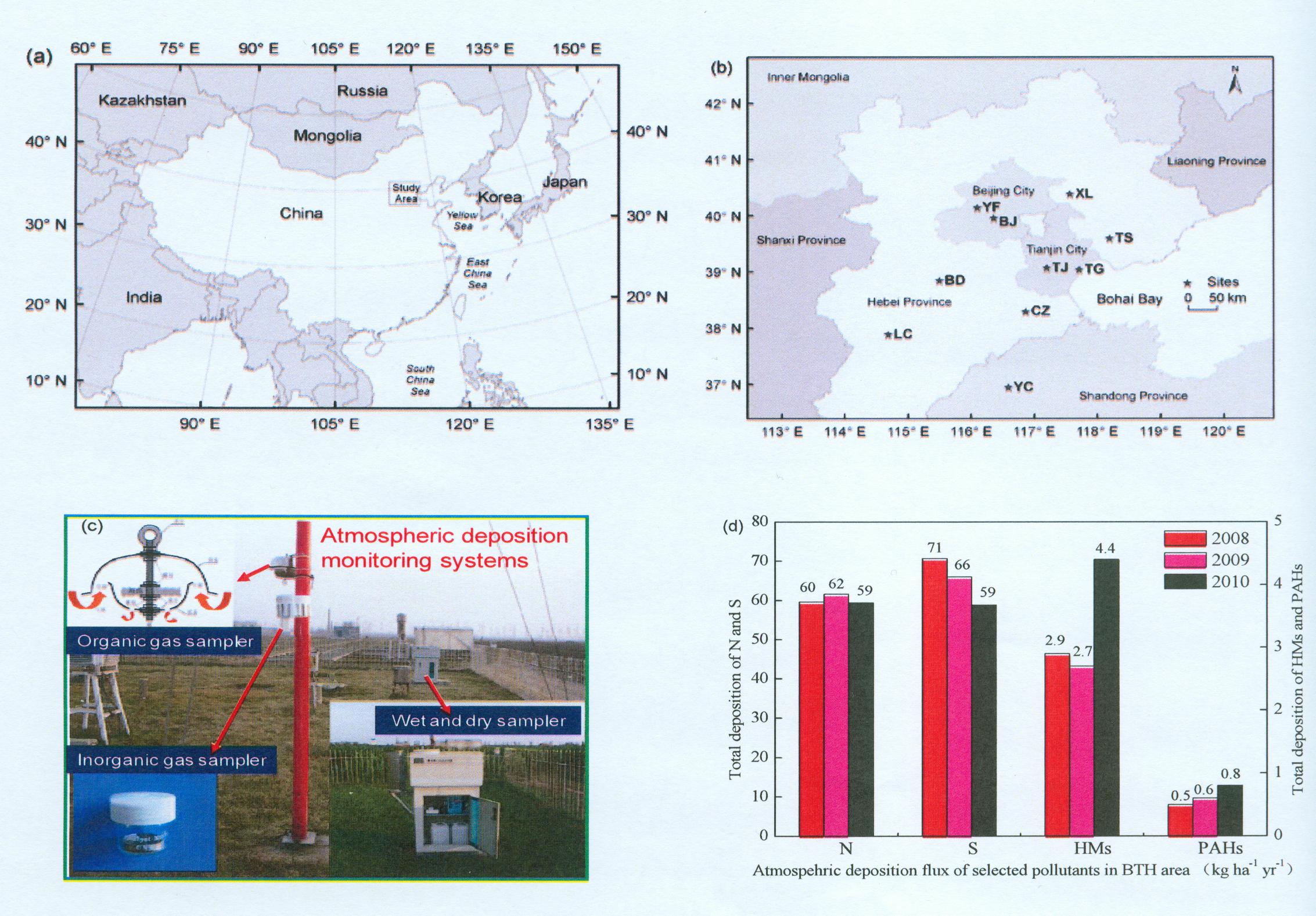A significant step towards the atmospheric deposition in North China
Date:2012-01-10
Wet and dry depositions of atmospheric contaminants are known to be important removal mechanisms of air pollution. Interest in atmospheric deposition results mostly from concerns about the effects of the deposited material entering terrestrial and aquatic environments as well as their subsequent health effects.
As one of the regions with fast economic development in China, the BTH area (Beijing city, Tianjin city and Hebei province) is particularly susceptible to air pollution. For the evaluation of human health and environmental risks, the quantification of atmospheric deposition of toxic substances and nutrients is primarily required. However, previously reported data were mostly short-termed and limited to few locations. Also, few measurements have been conducted in the target area so far to quantify the contributions of atmospheric dry deposition to total deposition flux.
Hence, a team of researchers, led by Professor WANG Yuesi, at the Institute of Atmospheric Physics(IAP), Chinese Academy of Sciences (CAS) has taken 5 years to measurement the atmospheric deposition fluxes for a number of chemical species, such as nutrients (e.g. nitrogen and phosphorus), acidic matters (e.g. sulfur and proton), heavy metals (HMs, e.g. Hg, Cu, Pb, Zn, Cd, Cr, Ni, Co and As) and Polycyclic Aromatic Hydrocarbons (PAHs, e.g. benzo[a]pyrene, benz[a]anthracene, benzo[a]pyrene, benzo[b]fluoranthene, benzo[k]fluoranthene, chrysene, dibenz(a,h)anthracene and indeno(1,2,3-cd)pyrene), etc. This is to our knowledge the first detailed element budget study in Northern China.
The results showed that the pH of cloud was mostly acidic and in the future acidity of precipitation due to HNO3 may increase as a result of the increasing trends of NOx and stable trends of SO2 emissions in megacities. The reducing primary emissions of particles and gaseous ammonia offer more clear–sky days in urban areas, but also lead to enhanced acid precipitation in Northern China. The results also demonstrated that the total deposition of dust, N, S, HMs and PHAs was approximately 1200, 60, 65, 3.3 and 0.6 kg ha-1 yr-1, respectively. These values are significantly higher than that reported by national scale monitoring networks in Europe and North America. Said Prof. Yuesi WANG. ”The results we found indicate that the increasing of air pollutants by human activities may affect or has been caused some problems which reveal as deterioration of air quality, acidification of lakes and soils, forest decline and eutrophication of coastal areas.”
However, there is a concern that much of the air pollution experienced in the target areas, for example Beijing, is regional in nature and not only attributable to local sources. Thus, control measures implemented only in Beijing cannot reduce pollutants to acceptable levels. To appropriately mitigate the influence of air pollutants on human health and the ecosystem after the current implementation of controls in power plants, the largest sector source of SO2, the abatement of human-related emissions of NOx, NH3 and VOCs will be a major challenge to the BTH area, requiring a multi-pollutant perspective, in terms of emission scenarios for the future and design of possible control policies that combine scientific, economic, and practical feasibility simultaneously. Despite the governments, this could be achieved through increased public awareness and behavior change education, such asreducing the use of individual vehicles,increasing vegetation area by planting more trees and grass, using recycling plastic bags and other environment-friendly materials.
This work was supported by the Knowledge Innovation Project of the Chinese Academy of Sciences (No.: KZCX1-YW-06-01). (Edited by Dr. Yuepeng Pan and Prof., Yuesi Wang. SCAS-CERN, IAP)

